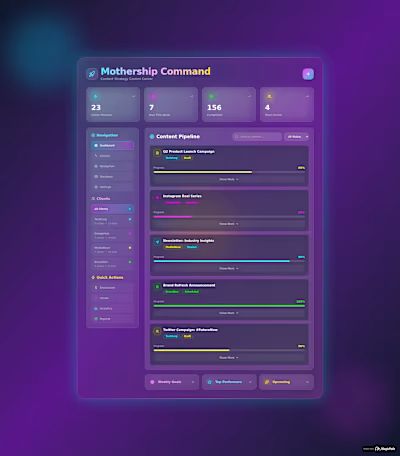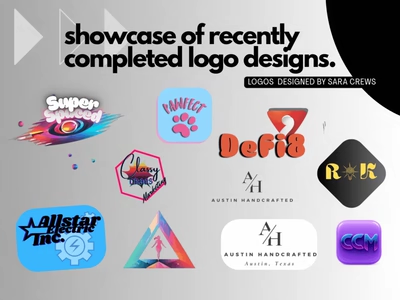Enhancing User Engagement: A Guide for Gaming Companies
Share:
Discover how top gaming companies are skyrocketing their user engagement rates with innovative strategies.
Exploring the Power of Personalized Gaming Experiences
In today’s gaming industry, user engagement is crucial for the success of any gaming company. One effective strategy that top gaming companies are using to enhance user engagement is by exploring the power of personalized gaming experiences. By tailoring the gaming experience to individual players, companies can create a more immersive and enjoyable experience for their users.
Personalization can involve various aspects, such as customizing in-game characters, allowing players to choose their own paths in the game, and providing personalized recommendations based on players’ preferences. By giving users the ability to personalize their gaming experience, companies can create a stronger emotional connection with their players and keep them engaged for longer periods of time.
Additionally, personalized gaming experiences can also lead to increased user satisfaction and positive word-of-mouth recommendations. When players feel that a game is tailored to their unique preferences and interests, they are more likely to share their positive experiences with friends and family, ultimately increasing the reach of the game.
Leveraging Social Media for Community Building and Feedback
Another effective strategy for enhancing user engagement in the gaming industry is by leveraging social media for community building and feedback. Social media platforms provide a powerful channel for gaming companies to connect with their players, build a community around their games, and gather valuable feedback from their users.
By actively engaging with players on social media platforms, gaming companies can create a sense of community and belonging among their players. They can share updates, behind-the-scenes content, and exclusive sneak peeks, creating excitement and anticipation for upcoming game releases. This sense of community can be further enhanced by organizing online events, tournaments, and giveaways, where players can interact with each other and the company.
Additionally, social media platforms provide a valuable source of feedback for gaming companies. By monitoring social media conversations and engaging in discussions with players, companies can gain insights into what their players like, dislike, and want to see in future games. This feedback can be used to improve existing games and develop new games that better meet the expectations of the players.
Creating Gaming Guides for Trending Games
Creating gaming guides for trending games is another strategy that gaming companies can use to enhance user engagement. As games become more complex and challenging, players often seek guidance and tips to improve their gameplay and overcome obstacles. By providing comprehensive and well-designed gaming guides, companies can cater to this demand and establish themselves as a reliable source of information for players.
Gaming guides can take various forms, such as written articles, video tutorials, and interactive websites. They can cover a wide range of topics, including gameplay mechanics, character builds, strategies, and hidden secrets. By creating high-quality guides that are easy to understand and follow, companies can help players enhance their gaming experience and achieve their goals.
In addition to providing valuable information, gaming guides can also drive traffic to the company’s website and increase brand visibility. When players find a helpful guide, they are likely to share it with their fellow gamers, spreading awareness about the company and its games.
Innovative Reward Systems to Boost Player Retention
Player retention is a key metric for measuring user engagement in the gaming industry. To increase player retention, gaming companies are implementing innovative reward systems that incentivize players to continue playing and achieving milestones in the game.
One popular type of reward system is the use of achievements and badges. By completing specific tasks or reaching certain milestones, players can earn achievements and badges that showcase their progress and accomplishments. These achievements and badges not only provide a sense of pride and accomplishment for the players but also serve as a form of social recognition within the gaming community.
Another effective reward system is the use of in-game rewards, such as virtual currency, items, and exclusive content. By offering valuable rewards that enhance the gameplay experience, companies can motivate players to keep playing and investing in the game. These rewards can be earned through gameplay achievements, in-game events, or even through social interactions and referrals.
By continuously updating and expanding the reward system, gaming companies can keep players engaged and excited about the game, ultimately leading to higher player retention rates.
Utilizing Analytics to Enhance User Interaction
Analytics play a crucial role in enhancing user interaction in the gaming industry. By leveraging data and analytics tools, gaming companies can gain valuable insights into player behavior, preferences, and engagement patterns. This data can then be used to optimize the gaming experience and create personalized interactions with players.
One way gaming companies can utilize analytics is by analyzing player data to identify patterns and trends. By understanding what motivates players, what challenges they face, and what aspects of the game they enjoy the most, companies can make data-driven decisions to enhance the user experience. For example, if analytics reveal that a certain level or feature of the game is causing frustration among players, the company can make adjustments to improve the gameplay and increase user satisfaction.
Analytics can also be used to segment players into different groups based on their preferences and behaviors. This segmentation allows companies to deliver targeted messaging, personalized recommendations, and tailored in-game experiences to different player segments. By providing players with content and experiences that resonate with their individual preferences, companies can create a more engaging and immersive gaming experience.
Interactive Content and Events: Keeping the Game Alive
To keep players engaged and the game alive, gaming companies are increasingly focusing on interactive content and events. Interactive content refers to any type of content that allows players to actively participate and engage with the game beyond the core gameplay.
One example of interactive content is in-game events, such as seasonal events, holiday-themed events, and limited-time challenges. These events introduce new gameplay elements, rewards, and storylines, creating a sense of excitement and novelty for the players. By regularly organizing such events, gaming companies can keep the game fresh and continuously provide new experiences for their players.
Another form of interactive content is user-generated content. Many games allow players to create and share their own levels, mods, and customizations, fostering a creative and collaborative community. By encouraging user-generated content, companies can tap into the creativity and passion of their players, further enriching the gaming experience and extending the lifespan of the game.
In conclusion, enhancing user engagement in the gaming industry requires a combination of personalized experiences, social media engagement, gaming guides, innovative reward systems, analytics, and interactive content. By implementing these strategies, gaming companies can not only increase user engagement rates but also build a loyal and passionate player base that will continue to support and promote their games.
a/b testing ad copy creation adextensions ad optimization advertising blogging boost how-to's brand awareness content-marketing content creation content strategy ctr digital-marketing digital channels display advertising email automation email copywriting email list building email segmentation engagement facebook ads google-ads google ads keyword research keywords lead magnets marketing off-page seo on-page seo organic-traffic pay-per-click ppc ppc advertising ppc campaign retargeting roi seo seo best practices seo tips social-media-marketing social media social media advertising social media marketing social media strategy video marketing
Like this project
Posted Apr 4, 2025
Share: Discover how top gaming companies are skyrocketing their user engagement rates with innovative strategies. Exploring the Power of Personalized Gaming Ex…






